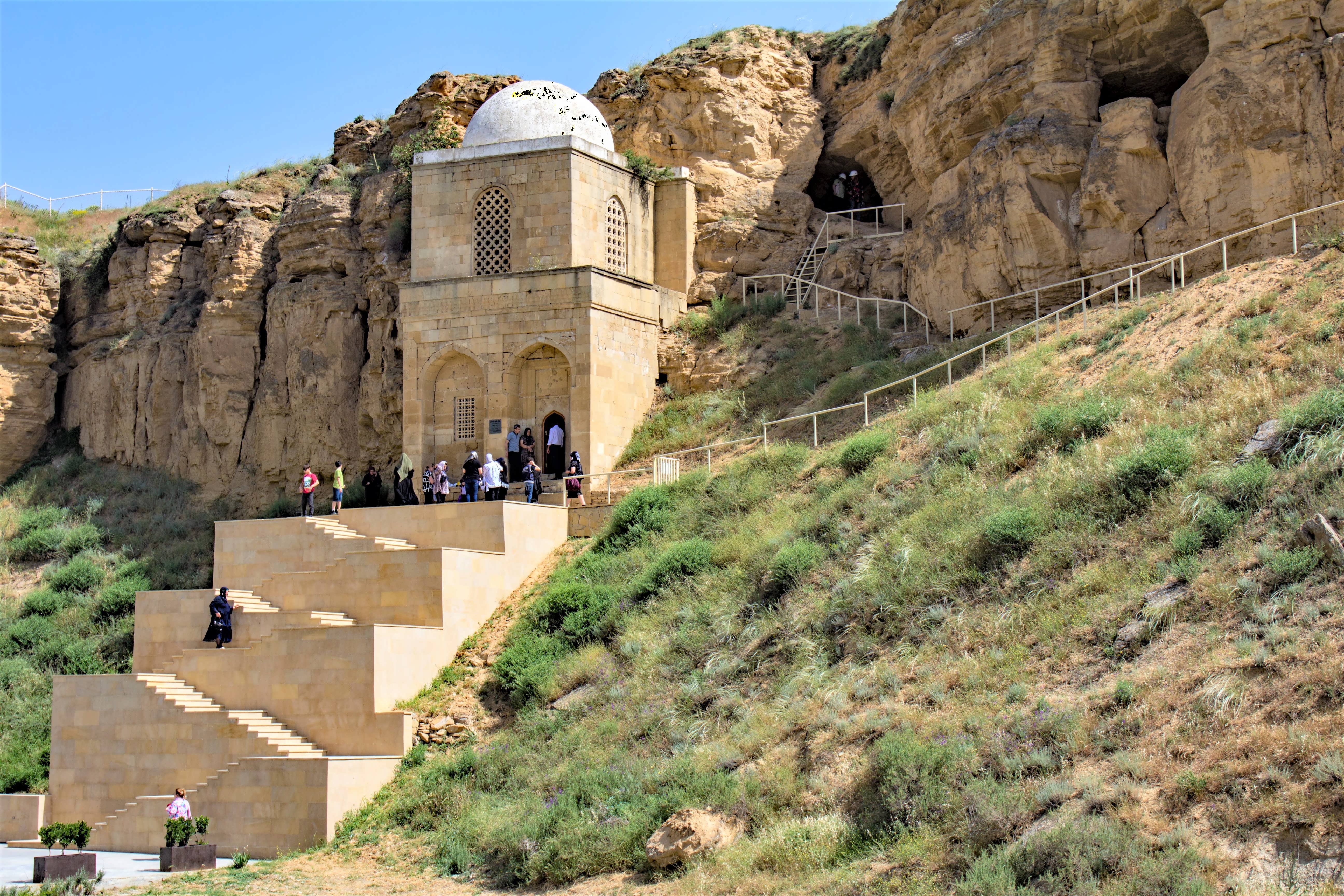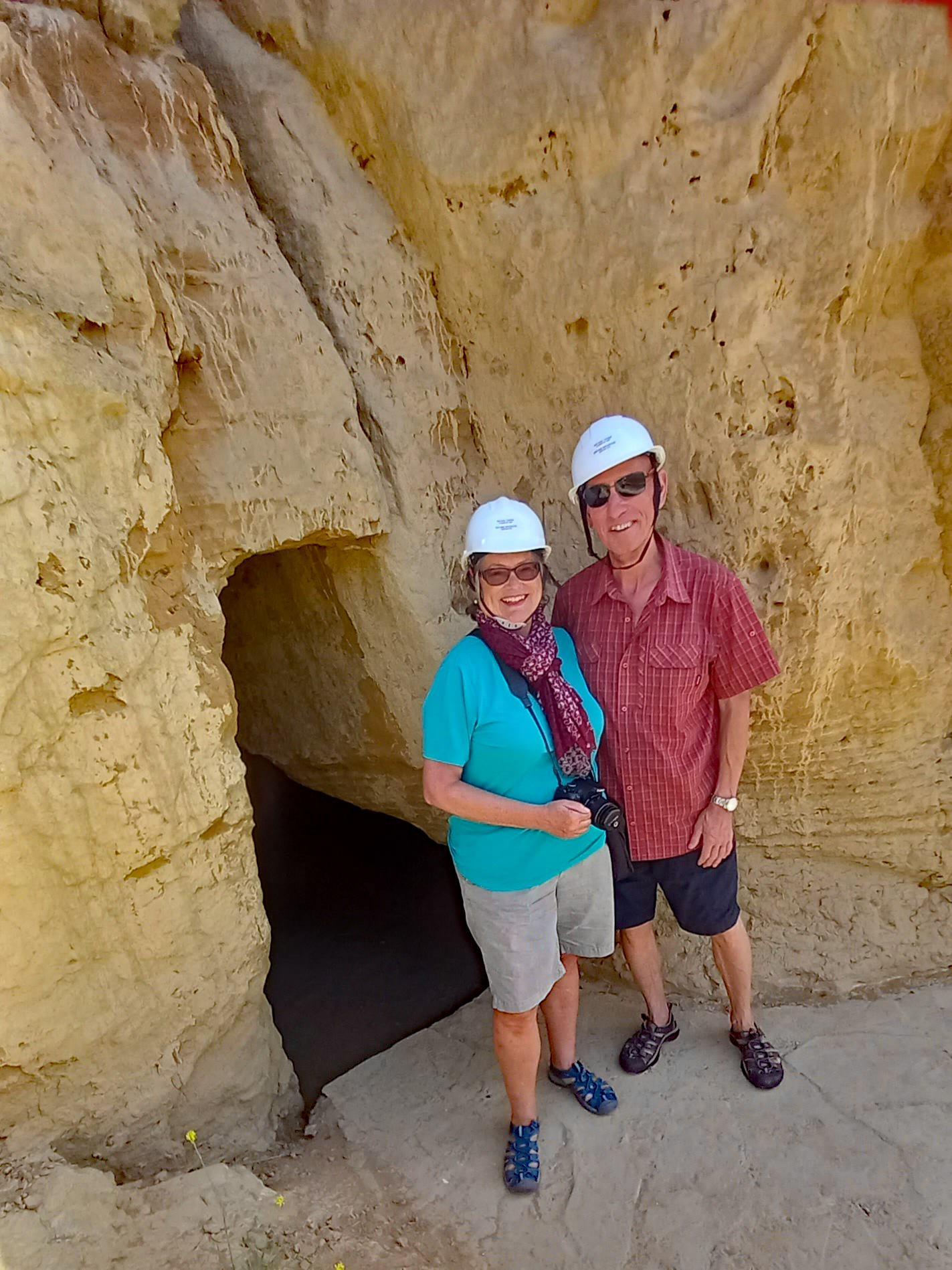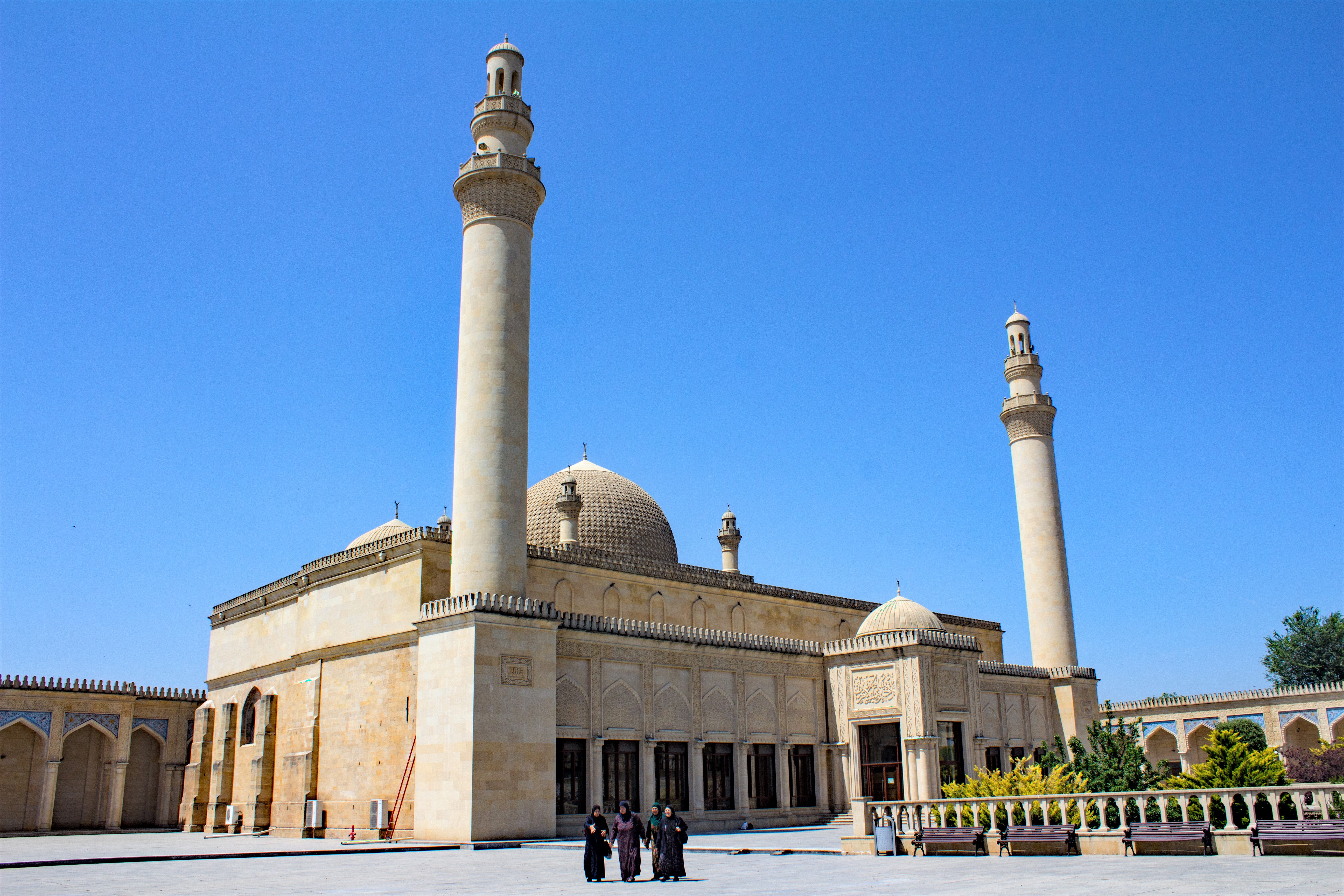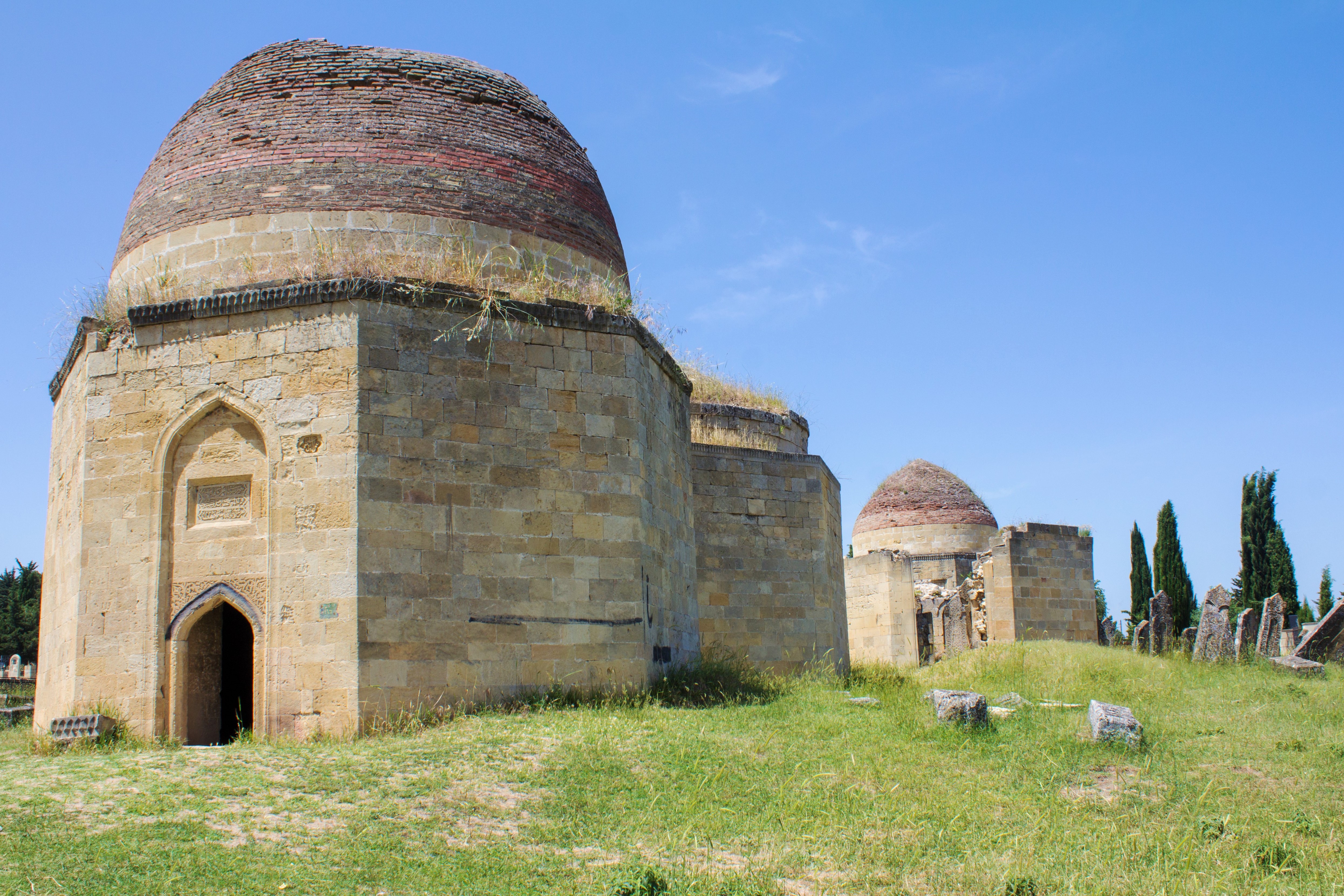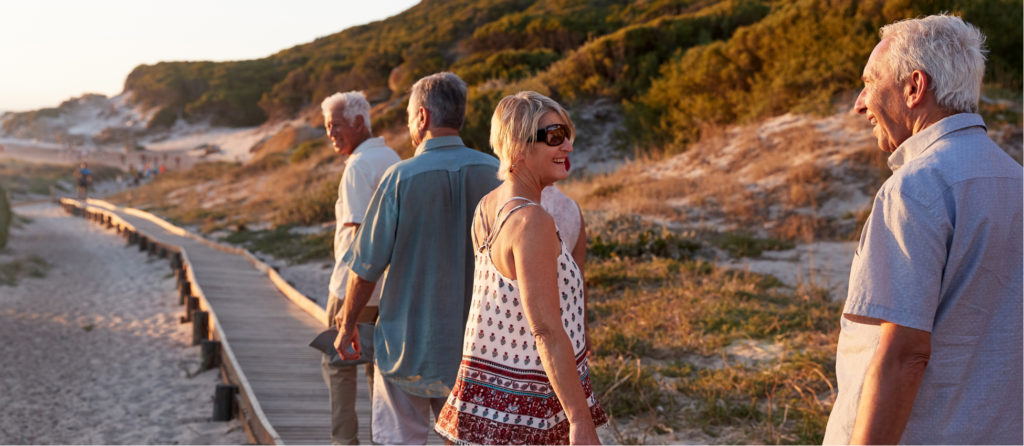On route between Azerbaijan’s capital Baku and Shamakhi, we visited two mausoleums.
Diri Baba Mausoleum – Local legend tells that a sacred character, Diri Baba, was buried here and remained imperishable. However, as several other tales are associated with the site, it has become an attraction to both pilgrims and the curious.
On arrival, a relatively long walk downhill led to the busy site where an information board warned ‘Snakes and scorpions in the area! Caves is (sic) unsafe!’ We began by visiting a cave to the left of the mausoleum. Having blindly signed a waiver written in Azeri, we donned hard hats, before negotiating a flight of uneven stone steps, and a metal ladder to reach what was essentially an empty cave, which at 5’ 6” I could just stand upright in.
The main mausoleum was reached by climbing six flights of zig-zag stairs which looked new. Although the stone steps were even and wide, there was no handrail, and it was busy, particularly with large groups. The white limestone mausoleum complete with cupola, was built into the rock face, and once inside the small cave, there was an internal flight of stairs carved into the cliff. They were not only steep and dark, but narrow, and although a guide was trying hard to control the flow, it wasn’t totally successful due to the volume of people of varying nationalities. Once at the top, there wasn’t much to see although we didn’t venture into a small, crowded room where shoes had to be removed.
Safely back down and out, we climbed more stairs on the right-hand side, to two other caves, although these were much smaller, and we couldn’t enter. Steps led further on, but we didn’t explore, whilst another long set of stairs led to an old cemetery.
Although there was a small block of toilets, which coped inadequately with visitor numbers, there were no other facilities. Whilst the mausoleum is a stunning site from the outside, we felt there was a lot of climbing to see so little.
Before reaching the second mausoleum, we stopped at the roadside Juma Mosque of Shemakha, built originally in 743, but rebuilt in 2013 following earthquake damage. Despite wearing shorts, we just had to remove shoes and I had to cover my head. The huge carpet was designed with praying places for up to 1,000 people.
Yeddi Gumbaz Mausoleum – located 1.5 km south of Shamakhi, a bumpy road led to Yeddi Gumbaz, a cemetery with seven mausoleums built during the beginning of the 18th century for the family of Mustafa khan, the last khan of Shamakhi. The architect’s name, Ustad Taghi, is known due to a ligature, or combination of letters, on the mausoleum.
Unfortunately, due to earthquakes, only four are still standing intact. These had brick cupolas although one had been destroyed and had grassy ‘hair’ growing from the top.
Each had a small doorway and my husband kindly bent down to take photographs of the tombs inside, so I didn’t have to.
The surrounding area was dry and grassy, and we were warned about the presence of snakes but there were good views of the city and a nearby modern cemetery which we didn’t venture to.
Whilst it’s not a particularly inspiring site, it’s worth a slight detour if you’re visiting Diri Baba.
